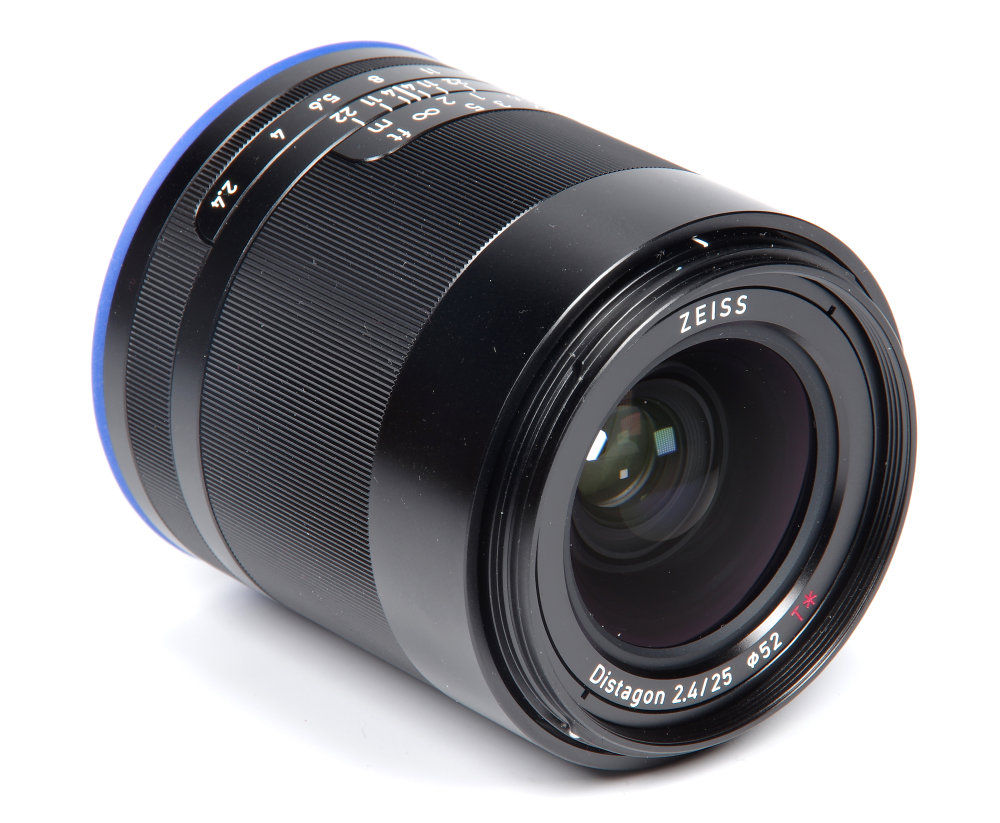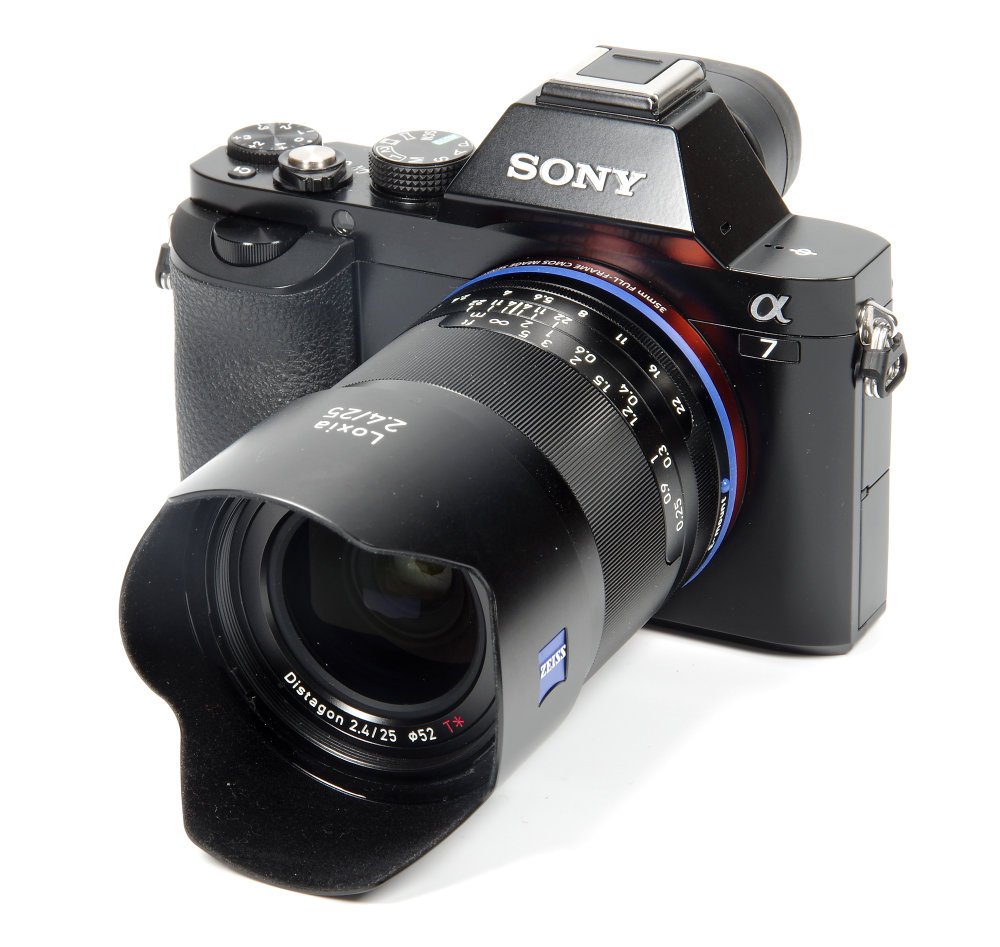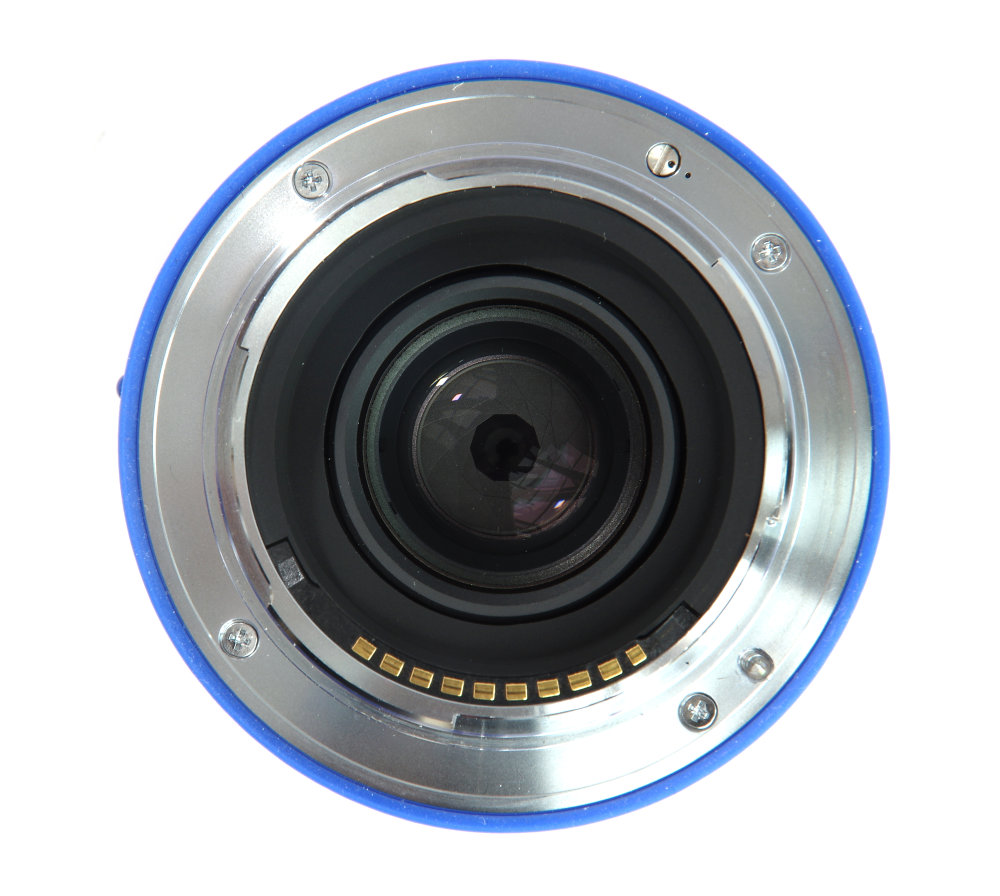Zeiss Loxia 25mm f/2.4 Review
Zeiss Loxia 25mm f/2.4 Distagon T* Handling and Features
At 380g, without caps, this metal construction lens feels substantial and inspires confidence. The confidence actually starts with the packaging, which speaks quality, with its superb box and very high density fitted foam interior. Lifting out lens and hood shows the precision even of the precut spaces that house them securely in transit. The point is that from the start there is a feeling of lack of compromise in the quest for quality.
The finish of the lens and hood are exemplary, with beautifully precise engravings and total smoothness of operation for the few controls that are provided. The hood bayonets easily into position and a subtle but firm click holds it in place. It could be argued that the fitting of the hood is somewhat over-designed, seemingly so that some shielding is offered to the front part of the lens barrel. It may well be that this helps to deflect rain away from the fitting and is part of the dust and weather proofing. Within the fitting for the hood we find a conventional 52mm filter thread. The lens does not rotate when focusing, so the use of polarising and graduated filters is made easier.
The wide manual focusing ring has a well ribbed surface that affords a good grip. It is not rubberised so needs this to avoid it becoming slippery when wet. The action of the focusing mechanism moves the lens in and out in the traditional way, using a helical thread. The smoothness of this is sublime, with a tactile feel reminiscent of say a Pentax M series lens from the 1980s. Focusing is down to 25cm which gives a reasonably close field of view.
Moving back towards the camera body there is a depth of field scale, quite usable as the clear distance scale on the focusing ring (marked in feet and metres) has enough space and enough engraved numbers to make it a practical proposition. Finally, the aperture ring, also beautifully damped, has gentle but positive click stops provided in one third stop intervals. If the lens is to be used for video work, there is a small screw on the mount that can be used to de-click the ring. A small tool is provided for this, but be aware that if lost a replacement tool costs almost £40, in which case a small screwdriver will be a more likely option for many.
Lens construction is 10 elements in 8 groups. There are 10 diaphragm blades which provide a very rounded aperture, which bodes well for the quality of the bokeh.
If we assume that users of full frame mirrorless cameras have likely migrated from DSLR designs then there is one small operational feature that might take some getting used to, albeit only for a short while. With a manual focus lens the direction of travel of the focusing and aperture settings can vary and if it does so this can cause a small hiccup to the seamless ergonomics of a system, a slight confusion that slows us down particularly if systems are mixed. The Loxia lens actually mixes styles for itself and the focusing operates in the same direction as Canon lenses, but the aperture ring operates in the same direction as Nikon or Pentax lenses. A minor point, but it is there.
Otherwise, using the lens is a great experience. The image is really easy to focus, it is bright and crisp and in a tactile sense it feels superb in the hand. Not only that, but moving the focusing ring instantly engages the focus assist features of the camera body, a very convenient feature.
Add your message
Please login here or if you've not registered, you can register here. Registering is safe, quick and free.
photodo Stats
428 MTF tests
74 in-depth photodo reviews
100+ users join each day
Help the lens community by reviewing or rating a lens today via our lens search
Latest Lens Reviews
- Chinon 28mm f/2.8 Vintage Lens Review
- Canon EF 70-200mm f/4L IS II USM Lens Review
- Samyang AF 85mm f/1.4 EF Review
- Sigma 70mm f/2.8 DG Macro Art Review
- Samyang AF 24mm f/2.8 FE Review
- Meike 50mm f/1.7 Review
- Tamron 70-210mm f/4 Di VC USD Review
- Lensbaby Burnside 35mm f/2.8 Review
- Asahi Super Takumar 50mm f/1.4 Review
- Asahi Super-Multi-Coated Takumar 135mm f/3.5 Review



